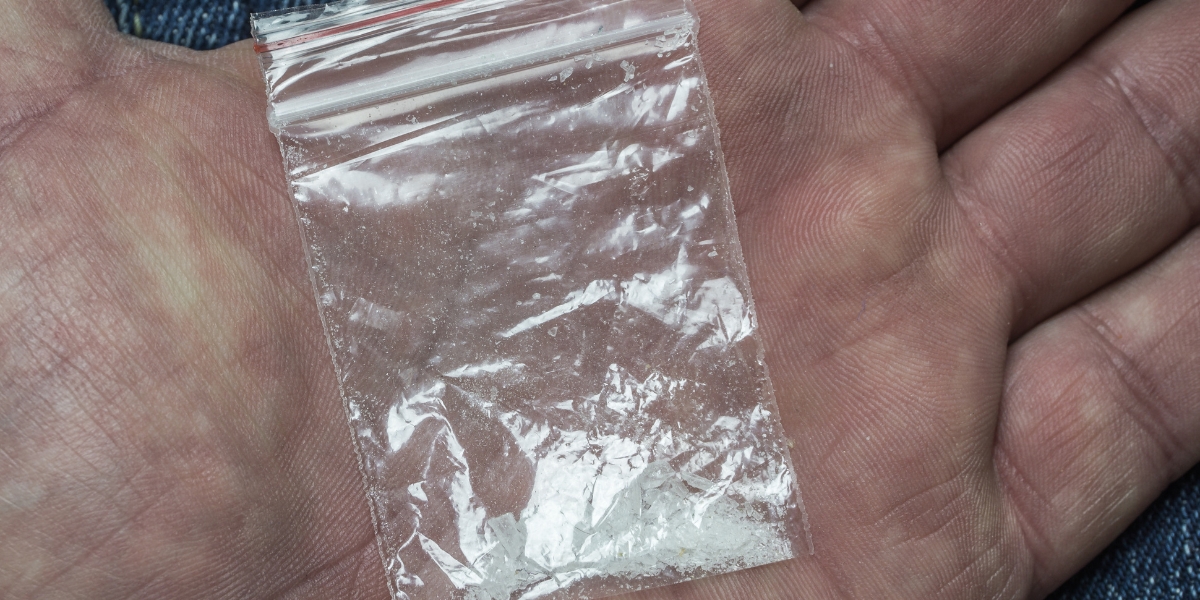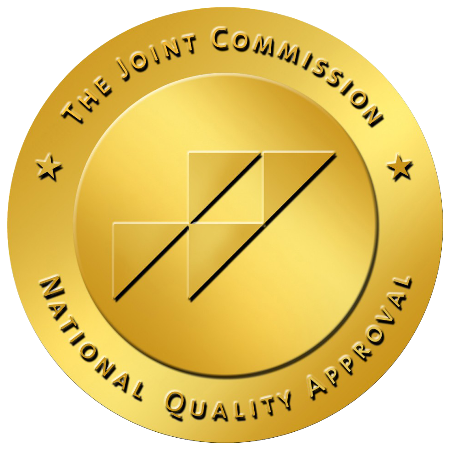What Is P2P Meth?

A new, more potent, and more dangerous type of meth is on the drug market, called P2P meth. The meth problem, with many people dying from overdosing and getting addicted, is much like the opioid problem.
Methamphetamine, also known as meth or crystal meth, is an addictive and illegal drug that makes you hyper. It messes with your brain and nerves, causing damage to your central nervous system.
The meth epidemic and America’s dependence on stimulants didn’t develop overnight. The United States has a lengthy past with it. Recent research on the drug market suggests it will continue to cause destruction and negatively impact many Americans. Without professional treatment and support, those affected may face difficult circumstances and, sometimes, even death.
History of Meth in the United States
The US history of methamphetamine is like the opioid crisis. Companies and the government promoted it without understanding the risks and consequences.
In the 1900s, people used a weaker type of meth to treat stuffy noses and chests from colds. During World War II, chemists developed a more potent form of methamphetamine. This new version could be made in large amounts and was given to soldiers. Its purpose was to enhance their energy levels and reduce their appetite.
The Nazis famously devised the Birch method for producing methamphetamine, which some meth manufacturers still use today to create ephedrine-based meth. Many returning soldiers developed meth addiction and turned to self-medication to cope with new mental health issues.
Pharmaceutical companies went all out to promote meth as a miracle drug. They marketed it as a cure for almost everything, targeting anxious homemakers, hyperactive children, and those struggling with weight issues. Meth, readily available in various forms without prescription, was a thing until the mid-1950s.
The 1960s and 70s witnessed a surge in drug experimentation, leading the government to take action, particularly against psychedelics and methamphetamines. Exploiting the demand in drug markets, drug traffickers saw an opportunity to expand their operations.
The Hell’s Angels biker gangs, hailing from Los Angeles and other parts of Southern California, transitioned in their meth production techniques. They moved away from the Birch method and adopted the phenyl-2-propanone (P2P) method, ending the ephedrine requirement. This switch showcased their resourcefulness and adaptability in the ever-evolving world of illicit drug production. They relied on other chemicals, mainly phenylacetone, to achieve a similar high.
In the 1980s, these medicines with ephedrine became easy to get, making people go back to using the Birch method to make meth. The drug cartels and even the Hell’s Angels figured out that making and selling meth was way faster than dealing with plants like marijuana, cocaine, or heroin.
But then, in the early 2000s, the governments of the United States, Mexico, and Canada got all strict and made a bunch of laws to control the sale and buying of stuff with ephedrine and pseudoephedrine. However, P2P meth production came back strong.
Journalist Sam Quinones shed light on the emerging opioid epidemic and its ties to cartels in his acclaimed book “Dreamland: The True Tale of America’s Opiate Epidemic.” In his subsequent work, “The Least of Us: True Tales of America and Hope in the Time of Fentanyl and Meth,” he documents the shift of drug traffickers towards manufacturing and selling synthetic drugs. Quinones was one of the early voices to raise awareness about P2P meth and its significant contribution to the rapid decline in mental health and the homelessness crisis in America.

What Is P2P Meth?
P2P meth, the alternative devised by drug traffickers in response to regulations on ephedrine and pseudoephedrine, involves using a blend of toxic chemicals instead of extracting substances from over-the-counter cold and allergy medicines. P2P meth is known to be more potent, cheaper, and highly dangerous compared to early 20th-century meth.
According to the National Institute on Drug Abuse (NIDA), most methamphetamine available in the United States comes from P2P meth. This type of meth is frequently laced with fentanyl to intensify the high and enhance addictive properties.
Chemists and drug researchers rely on meth samples to establish impurity profiles, identify its chemical composition and origin, and assist law enforcement in tracking drug sources. This research also contributes to understanding the effects of the chemicals used in meth production and developing effective treatments for addiction.
The typical chemicals used in the P2P method of meth manufacturing include:
- Cyanid
- Sulfuric acid
- Hydrochloric acid
- Mercury
- Racing Fuel
- Acetone
- Nitrostyrene
- Lye
These chemicals challenge government regulation since they can be found in beauty items and fertilizers. Their widespread availability and affordability have made it easy to produce P2P meth at a low cost and distribute it in large quantities. During the early 2000s, a pound of ephedrine-based meth had a price tag of approximately $10,000, whereas a pound of P2P meth was valued at around $1,000.
Law enforcement treats ephedrine-based (traditional) meth and P2P meth equally. Both are classified as Schedule II controlled substances.
P2P meth is typically found as white or off-white crystals or a coarse, white-to-grayish powder closely resembling ephedrine-based meth. It has a bitter taste and remains odorless until it is smoked. At this point, users report a strong chemical or ammonia smell. Meth users often emit this distinct odor through sweat and breath, particularly after extended meth use.
What Is P2P Drug Slang?
P2P, which stands for phenyl-2-propanone, refers to the specific chemical process used to produce this type of methamphetamine.
Standard drug slang terms for P2P meth include:
- Ice
- Hot meth
- Super met
- Crystal
- Glass
- Tina
- Crank
It is worth noting that many individuals may not be aware that they are using P2P instead of the regular versions of the drug, and they often use the same slang terms to refer to it. Some slang associated with P2P meth highlights its powerful psychoactive effects on individuals.
Side Effects of P2P Meth
The side effects of P2P methamphetamine are notably intense, even when compared to the effects experienced by regular meth users. This is primarily due to its chemical composition and the frequent inclusion of fentanyl.
Common side effects of P2P meth includes rush of euphoria:
- Disconnection from reality
- High blood pressure
- Fast heart rate
- Rapid breathing
- Severe insomnia
- Loss of appetite
- Confusion
- Excessive sweating
- Extreme paranoia
- An urge to isolate oneself
- Disturbing hallucinations
- Thoughts of violence or suicide
In contrast to regular meth, which often leads people to become more social and outgoing, P2P meth users report feeling the following:
- Overwhelming anxiety
- Paranoid delusions
- Self-isolation
- Wishing harm on others or themselves

Long-Term Side Effects
“Meth doesn’t typically lead to overdose and immediate death; instead, it gradually destroys individuals over time.” This statement highlights the severity of methamphetamine’s impact.
Meth has horrible effects on its users’ well-being as they experience a progressive decline. Mental health care specialists and other researchers also describe the cognitive impact of P2P meth as a “mental catastrophe.”
Co-occurring substance use disorders:
- Homelessness
- Withdrawal symptoms
- Coma
- Death
Long-term side effects of P2P meth abuse include the following:
- Serious memory loss
- Liver damage and failure
- Brain damage
- Dental decay (known as “meth mouth”)
- Lung injury and damage
- Serious mental illness
- Psychosis
- Schizophrenia
Many people who have attempted to quit P2P meth have reported prolonged and challenging withdrawal periods, sometimes lasting up to six months. Experts believe that the potency of the toxic chemicals used in production, combined with the presence of fentanyl, contributes to the extended duration of withdrawal symptoms.
The NIDA suggests using a matrix model for treating meth addiction. This model includes behavioral therapies, drug testing, education, and relapse prevention planning. It’s a comprehensive approach that aims for effective outcomes. Residential treatment is particularly beneficial for individuals facing housing insecurity and dealing with co-occurring disorders or multiple substance use disorders.
Meth Addiction Treatment
There are only two outcomes regarding meth addiction— recovery or death.
Northridge Addiction Treatment Center offers a fresh start for people to find happiness and stability without substance abuse. We offer medical detoxification at our facility. We provide medical, nutritional, and emotional support during withdrawal. Our goal is to help you regain your strength.
If you are ready to embark on a life centered around recovery, we encourage you to contact us immediately.
Our team can assist you in verifying your insurance coverage and address any concerns you may have regarding your treatment options.
Find Meaningful Recovery
Our caring and compassionate specialists are eager to help you comfortably navigate this journey to recovery. Our individualized treatment plan, programs, and therapies may be a perfect match for you or your loved one. Let us assist you in living the happy life you deserve. It starts with a phone call.




